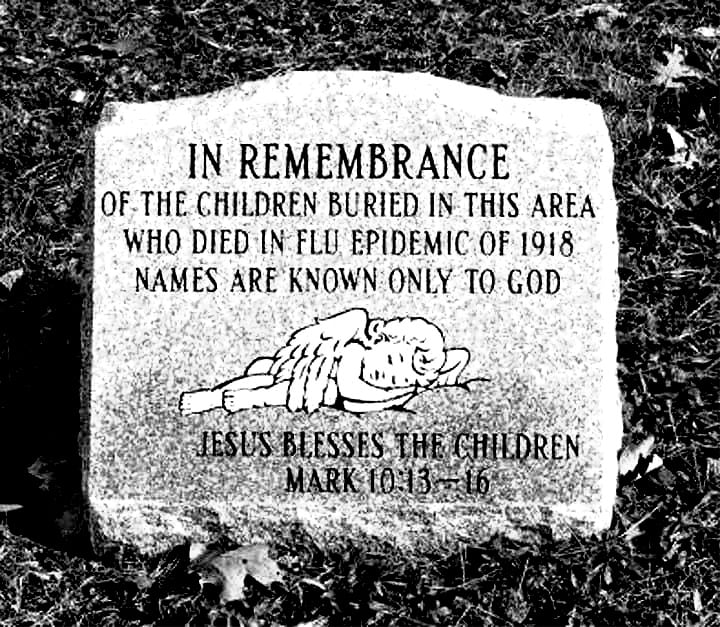James Shockley

We are currently in the midst of a major influenza epidemic. One hundred years ago a more virulent epidemic developed into a worldwide scourge.
We have no way of knowing exactly how many people died worldwide, but estimates range from 50 million to 200 million.
I have a personal interest in this epidemic. Ellen Hudgins was related to me on my mother’s side of the family. In the fall of 1918 the Hudgins, except for Ellen, lived on a fairly isolated farm in Fluvanna County.
Ellen was not satisfied with farm life and taught school a few miles from Richmond. The family read in the newspaper about the flu epidemic that was ravaging the nation.
Not knowing anything about how diseases are spread, they assumed that they were in imminent danger on the farm and feared for the life of their fourteen year-old daughter, Judith. In a major miscalculation they sent Judith to live with Ellen to save her from the flu.
It should have been clear that isolated farms are some of the best places to be during an epidemic, and schools are some of the worst. (At schools people come and go, and at first there is no way to tell who is infected.)
The flu did hit the school, Ellen and Judith were both infected, and they died a few days apart. It was a horrible shock for the family, and it took years for them to recover.
Similar experiences were repeated thousands of times in this country. The 1918 flu epidemic ranks as the worst disaster to ever strike the United States.
We typically have about 36,000 deaths a year from influenza and its complications. In the 1918 flu season we had about 675,000 deaths, and this was at a time when the population was about one-third of our current population.
That particular strain of influenza was so virulent that a person who showed no symptoms in the morning might be dead by night.
There were towns that ran out of coffins and had to bury the dead in deep trenches. Some people collapsed and eventually died on the street with passers-by afraid to help.
I have been told that one man’s entire family died, but he had no way to get the bodies to the cemetery, so he put them in a wagon, drove it to the cemetery, dug a large grave, and buried them himself.
There was a war going on in 1918, and Congress had just passed an anti-sedition bill that, essentially, made it illegal to publish anything that made the government look bad.
At first the government did not officially recognize that the flu epidemic was worse than the typical annual one and did nothing to let the public know about it.
The newspapers feared publishing much about the dangers because of the anti-sedition act. Eventually the epidemic got so bad that the news got out, and panic ensued.
In some places everyone was ordered to wear a mask when out in public, but they were so porous that they were useless.
Theaters and public meeting places were closed in New York and other large cities. Because of the shortage of men, women were enlisted as ambulance drivers to pick up the sick and the dead.
Most viruses that infect us start as animal viruses that “escape” to people. We think that the 1918 influenza virus started as a mild bird virus, escaped to a pig population, then escaped from that to become a human virus.
By that time, it had mutated so much that most people had no natural immunity. At first the illness was fairly mild, causing little concern in the medical profession, but then a second wave became much more deadly. Doctors were shocked that the most vulnerable were healthy people in their 20’s and 30’s, the ones who usually have the best survival rate.
The first recorded case was of an Army recruit in basic training who returned to his base from a visit home at a pig farm. Soon many soldiers at that base were infected.
The army did not realize the severity of the problem, so the infected soldiers were sent in the normal order to another base for deployment overseas. This caused an epidemic on the second base.
Later they were put on a troop ship under more crowded conditions, causing still more soldiers to become infected.
Once in Europe they spread the disease even further until eventually almost all of Europe was infected.
When the war ended in November of 1918, the soldiers came back home and spread the most virulent form of influenza here.
Some ethnic populations had a high degree of natural immunity and were not hit too hard. Others, such as the American Indians and the Eskimos of Alaska and Canada had almost no immunity and had 50 percent mortality.
In fact, a few Eskimo villages were completely wiped out – not one person survived.
In the spring of 1919 the epidemic vanished as suddenly as it had begun.
James Shockley writes a monthly history column. He lives in Blacksburg.


